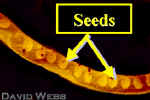
Immature Gleditisia Fruit |
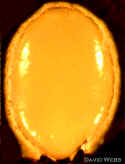
Immature Seed External View |

Immature Seed Split Open: A Cotyledon and Root Apex are readily visible. |
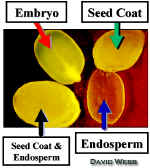
Dissected Seed: Note the presence of a semitransparent Endosperm plus the Embryo. |
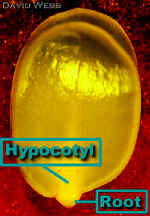
Complete Embryo with both Cotyledons visible as well as the
Hypocotyl. The Hypocotyl is the region of the stem BELOW the Cotyledons. |
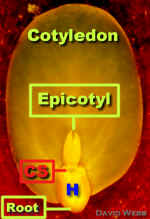
Embryo with one Cotyledon Removed: The Epicotyl with
macroscopic Leaves is visible. The SAM
is located at the base of the leaf primordia. The Cotyledon Scar
is visible. This marks the Cotyledonary Node! H = Hypocotyl. |
| The Mature Seed
has no visible Endosperm. This is consumed by the Cotyledons. |
